Environment
The Surprising Reasons Why Dogs Have Whiskers
In some ways a dog's whiskers may be viewed as part of their visual system.
Posted December 17, 2019 Reviewed by Gary Drevitch
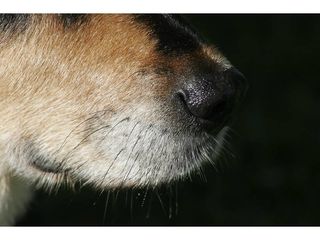
There are people who think that a dog's whiskers have no purpose, and are simply longer unruly hairs that are best snipped off at the groomers to make the face look neat and clean. Such people are wrong, and the surprising function of a dog's whiskers is to help to make up for the limitations in the dog's visual system.
First let us define what we mean by a whisker. For dogs whiskers are coarser and thicker hairs than their regular hair or fur and have roots that are deeper. Technically they're called vibrissae. Unlike the neatly arranged 12 whiskers that form four rows on either side of a cat's face, the placement of dog whiskers tends to vary from one individual to another in an irregular and unpredictable manner. However in all dogs some whiskers are strategically located above the eyes, some on both sides of the muzzle, while others are found above the upper lip (pointing down) and beneath the dog's chin.
The follicles at the base of the whiskers are packed with nerve fibers that send sensory information to a dog's brain. These are the most sensitive touch receptors on a dog's body, and can respond even to subtle changes in air currents as the dog moves through the environment. Whiskers also can move and often extend themselves in the direction of objects of interest. The importance of whiskers is demonstrated by the fact that as puppies begin their lives the whiskers are among the very first hairs to develop. Furthermore, 40 percent of the part of the brain set aside to process touch in the dog is devoted to a map of the whiskers.
The whiskers above the dog's eye are the easiest for most people to associate with the visual system. These whiskers are designed so that when the airflow or some object causes the whisker to flex, indicating that something is about to impact the eye, it causes an immediate protective eye blink.

The whiskers on either side of the muzzle serve a very important function in that they compensate for the fact that dogs are naturally very farsighted. That means that things in the distance are clearly seen by a dog, while things that are closer are blurred. Thus if a dog approaches a partially open door, such as the one shown below, the edges of the door would be blurred and it will be difficult for him to judge their distance.
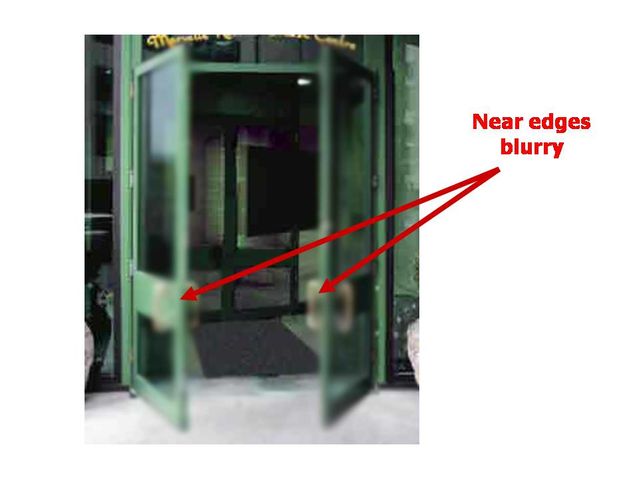
Normally the whiskers on the side of the muzzle will grow out to a length roughly equivalent to the width of the dog's head or body. Thus the air currents, which grow stronger as the dog approaches a surface, will bend the whiskers and tell the dog if the opening is wide enough to let him through. This also provides useful information when the dog is moving around the world at night.
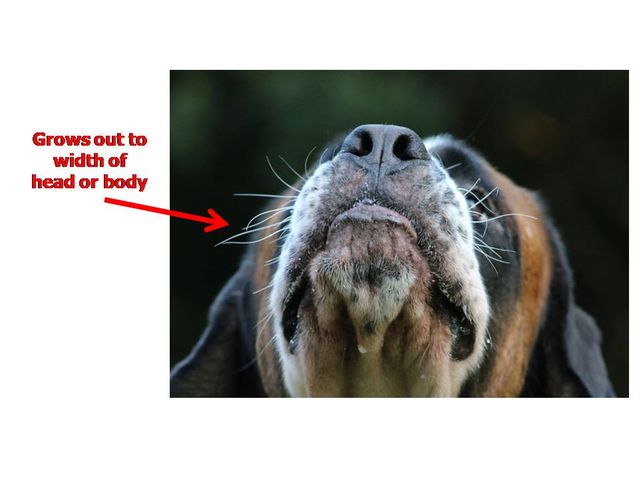
In addition to their farsightedness, the dog's visual system is limited by another factor which requires the assistance of whiskers. Specifically the dog's muzzle blocks part of his visual field and prevents him from seeing things that are low and in front of his face. You can see how this works for yourself by forming a fist with your hand and using it to circle around the end of your nose. Your fist acts much like a muzzle in blocking what you can see. Now, hold your other hand out flat in front of you as if it were a dog bowl. Notice that if it is far enough in front you can see it but as you draw near the muzzle obscures the bowl so that it is impossible to detect how far your mouth would be from the food or other objects you might want to pick up.
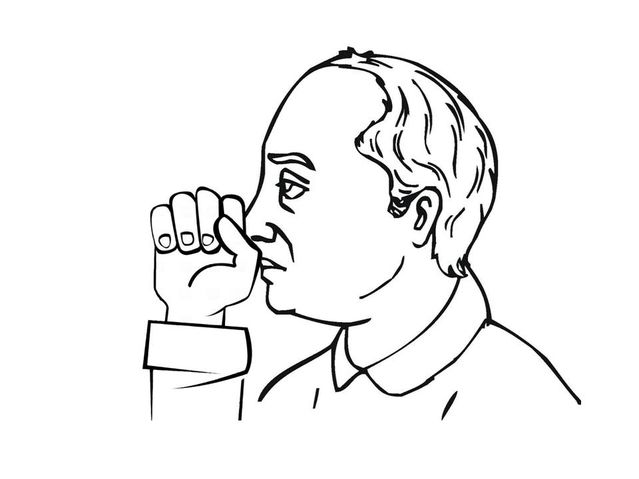
To solve this problem the dog has two additional sets of whiskers, one pointing downward from the upper lip area and another pointing downward from under the chin. These vibrissae detect the closeness of things under the muzzle. Some scientists say that the sensory data obtained from these particular sets of whiskers actually provides enough information to not only tell the distance of objects under the muzzle, but possibly also their size and shape.
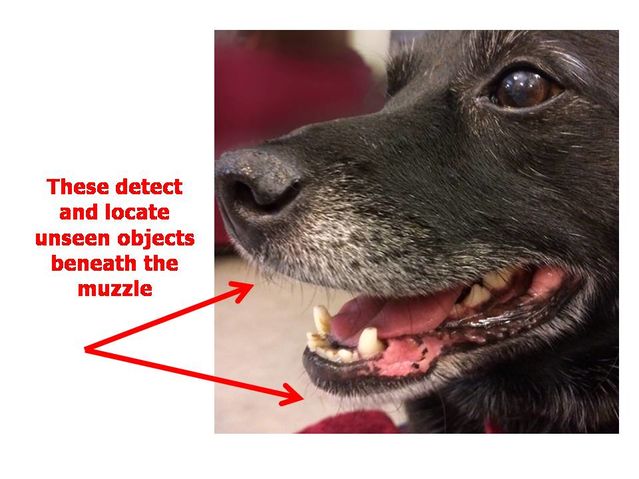
So the reason that dogs have whiskers is because, despite their great senses of smell and hearing, canine vision is not so wonderful. Their whiskers help them to "see" things that lie under their noses or come close to touching their head. They do this by detecting very faint vibrations caused by changes in air currents and thus they act much like a personal set of radar detectors.
That means that although your dog's whiskers might make his face look untidy, you should not let your groomer trim or cut them since by so doing you are actually effectively removing these valuable aids to the dog's visual system.
Copyright SC Psychological Enterprises Ltd. May not be reprinted or reposted without permission


